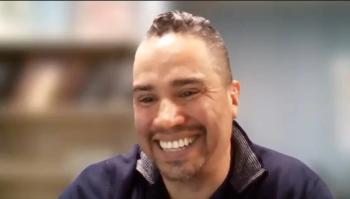
Study Finds Average Insolvency Rates Rise Fourfold Within Five Years of Cancer Diagnosis
Researchers measured the rate of bankruptcy after a first cancer diagnosis and identified factors that increased bankruptcy risk among people with common cancers.
ABSTRACT: Petri Dish is a blog written and produced by the external relations and communications staff at Fred Hutchinson Cancer Research Center. The blog delivers science and biomedical information to the world by highlighting and illuminating the scientific research at the Hutchinson Center and events and general happenings relevant to the center and our larger community.
I fought back tears as I interviewed Deirdre last November. Though trying mightily to be valiant and optimistic, the 57-year-old oral cancer survivor was heavily burdened by worry. She had never been without health insurance in her life, but when her cancer was diagnosed in 2009, Deirdre was between jobs and uninsured.
Treatment has left Deirdre unable to eat, taste, chew, talk for long periods, hear in one ear, or return to her previous career. Her health care bills are enormous and her home has been foreclosed. She is living with one of her adult children and desperately wants to not be a burden.
Deirdre would not be at all surprised by recent Hutchinson Center findings that show a successful battle against cancer not only exerts a terrible physical toll, but a financial one too. The study suggests the longer the survival, the higher the rate of insolvency.
The Hidden Cost to Survival
Dr. Scott Ramsey
Dr. Scott Ramsey, a physician and health care economist, and his colleagues at the Hutchinson Center, the University of Washington, and the University of Bristol linked federal bankruptcy court records to cancer registry data from nearly 232,000 adult cancer cases in western Washington from 1995 to 2009 and found a hidden cost to survival: bankruptcy rates increased fourfold within five years of diagnosis.
“Patients diagnosed with cancer may face significant financial stress due to income loss and out-of-pocket costs associated with their treatment,” said Ramsey, who presented the findings at the American Society of Clinical Oncology’s annual meeting.
Short Road to Insolvency
The National Cancer Institute–funded study found that compared to the general population, bankruptcy rates were nearly twice as high among cancer patients one year after diagnosis, and that the median time to bankruptcy was two and a half years after diagnosis.
“The risk of bankruptcy for cancer patients is not well known, and previous studies have relied on individual self-reports about medically related reasons for bankruptcy filing,” Ramsey said. “By linking two irrefutable government records of cancer and bankruptcy, we are able to determine how financial insolvency risk varies by cancer type, treatment, and other factors.”
Like Deirdre, likely none of us is too surprised by these study results. We probably all know people who have been financially ruined by illness. In 2005, about half of the bankruptcy filings in the U.S. were due to medical expenses, according to the Health Affairs journal. Cancer is a very costly disease to treat.
The researchers measured the rate of bankruptcy after a first cancer diagnosis and identified factors that increased bankruptcy risk among people with common cancers.
Factors Affecting Bankruptcy
They found that bankruptcy risk varies widely across cancer types. The risk is highest for lung, thyroid, and leukemia/lymphoma cancer patients.
Patients over 65, who are typically on Medicare, have a much lower risk of bankruptcy than younger patients. The researchers also found that bankruptcy rates among cancer patients have increased significantly since the US financial crisis.
As much progress as we’ve made in helping cancer patients become cancer survivors, these findings show there is much work to be done in reducing the financial aftermath of treatment.
This article was reprinted from the
Newsletter
Stay up to date on recent advances in the multidisciplinary approach to cancer.

















































































